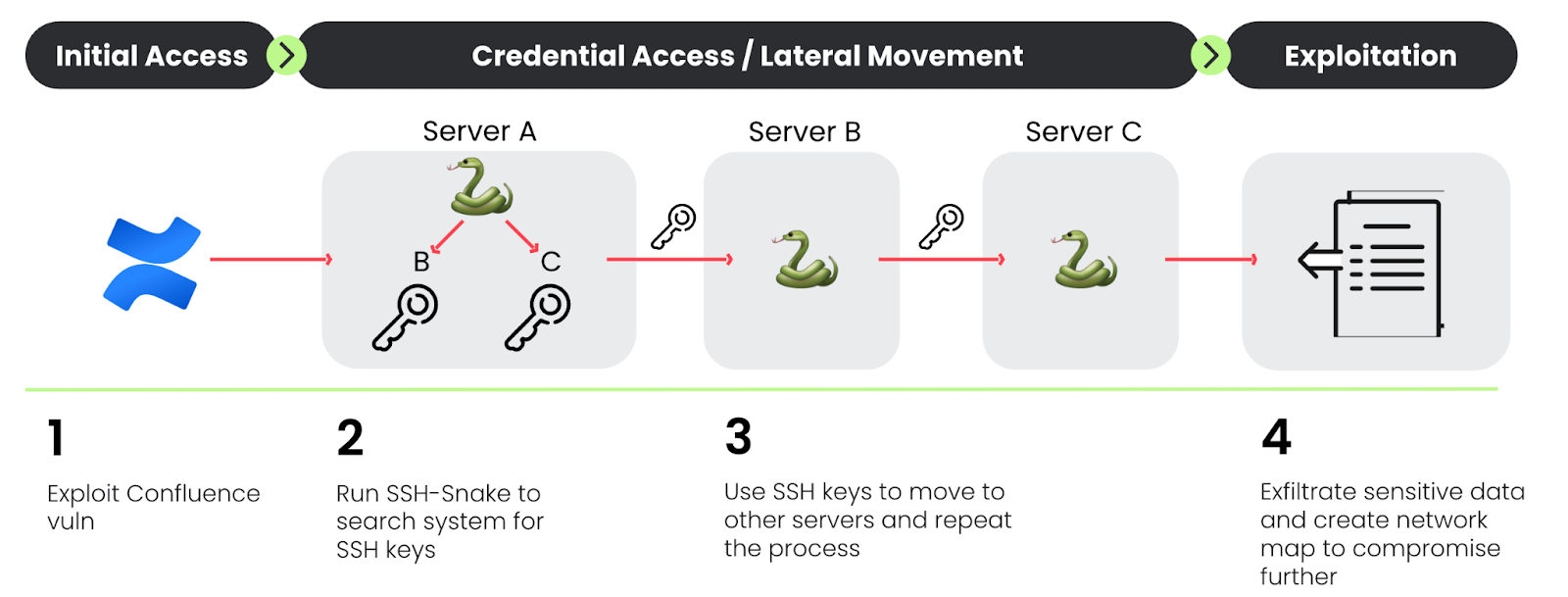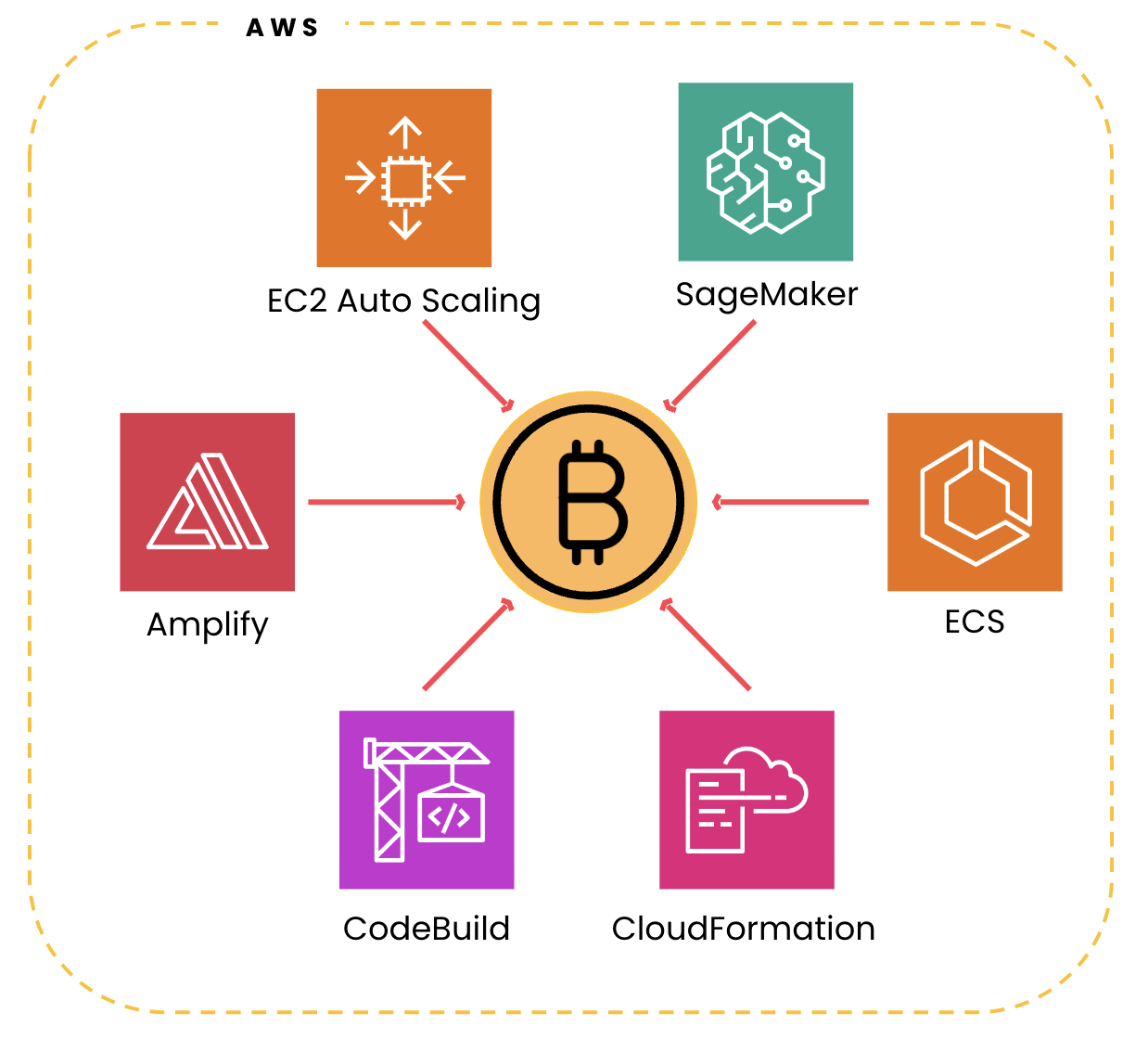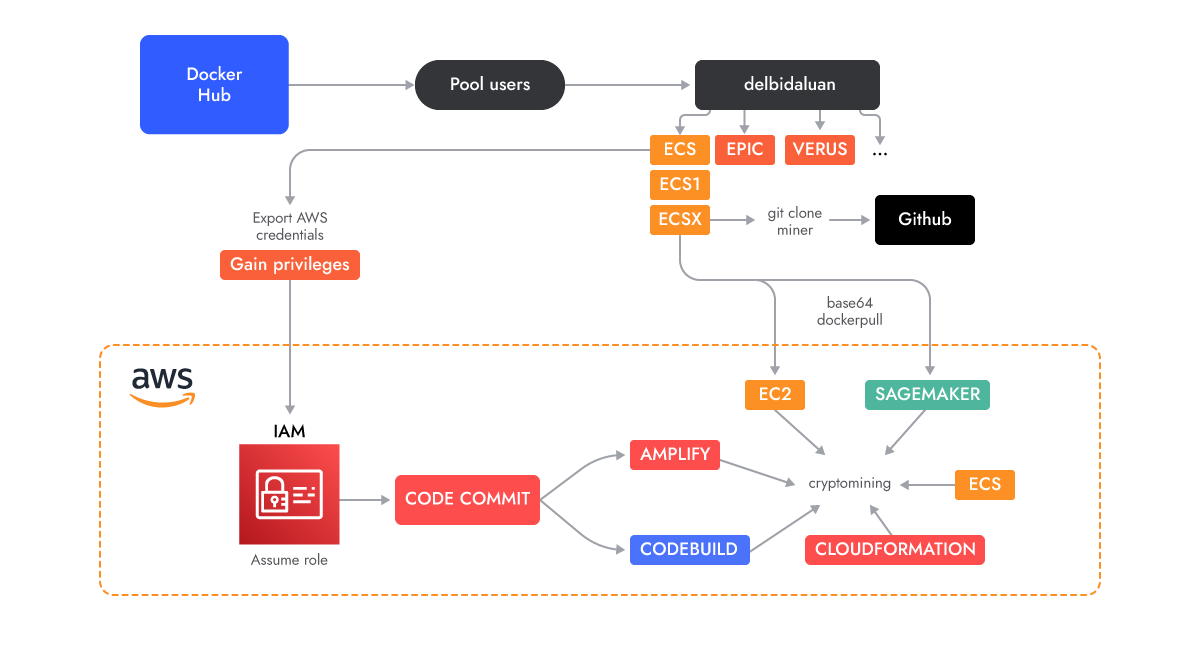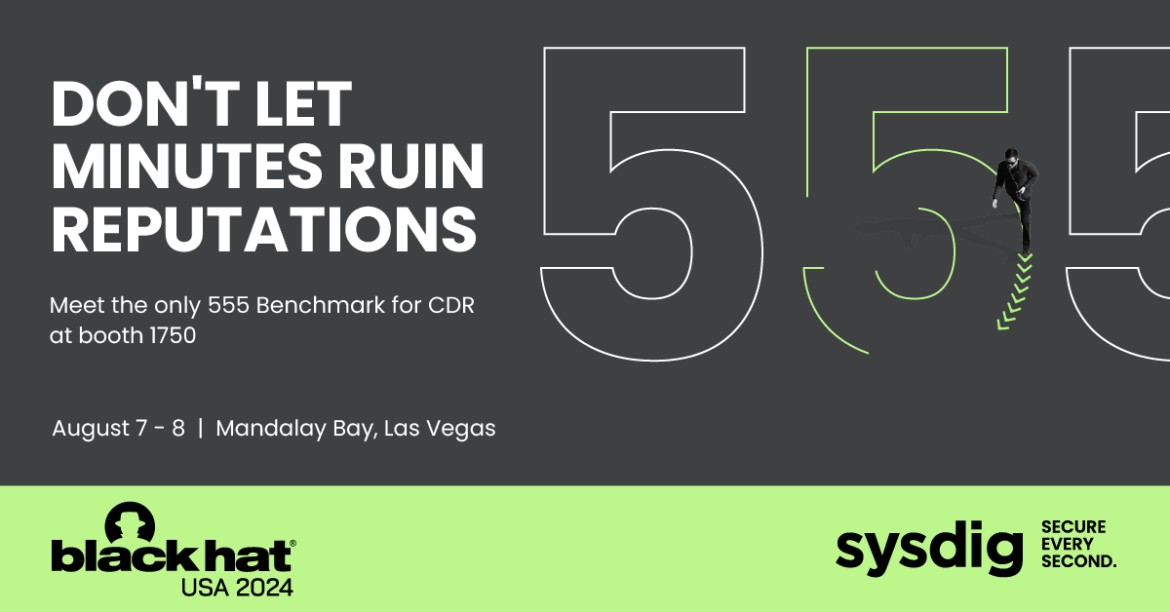
Falco Feeds extends the power of Falco by giving open source-focused companies access to expert-written rules that are continuously updated as new threats are discovered.

The Sysdig Threat Research Team (TRT) is on a mission to help secure innovation at cloud speeds.
A group of some of the industry's most elite threat researchers, the Sysdig TRT discovers and educates on the latest cloud-native security threats, vulnerabilities, and attack patterns.
We are fiercely passionate about security and committed to the cause. Stay up to date here on the latest insights, trends to monitor, and crucial best practices for securing your cloud-native environments.
Below, we will detail the latest research and how we have improved the security ecosystem.
And if you want to chat with us further, look us up at the Sysdig booth at Black Hat 2024!
LLMJACKING
The Sysdig Threat Research Team (TRT) recently observed a new attack known as LLMjacking. This attack leverages stolen cloud credentials to target ten cloud-hosted large language model (LLM) services.
Once initial access was obtained, they exfiltrated cloud credentials and gained access to the cloud environment, where they attempted to access local LLM models hosted by cloud providers: in this instance, a local Claude (v2/v3) LLM model from Anthropic was targeted. If undiscovered, this type of attack could result in over $46,000 of LLM consumption costs per day for the victim.
Sysdig researchers discovered evidence of a reverse proxy for LLMs being used to provide access to the compromised accounts, suggesting a financial motivation. However, another possible motivation is to extract LLM training data.

All major cloud providers, including Azure Machine Learning, GCP's Vertex AI, and AWS Bedrock, now host large language model (LLM) services. These platforms provide developers with easy access to various popular models used in LLM-based AI.
The attackers are looking to gain access to a large amount of LLM models across different services. No legitimate LLM queries were actually run during the verification phase. Instead, just enough was done to figure out what the credentials were capable of and any quotas. In addition, logging settings are also queried where possible. This is done to avoid detection when using the compromised credentials to run their prompts.
The ability to quickly detect and respond to those threats is crucial for maintaining strong defense systems. Essential tools like Falco, Sysdig Secure, and CloudWatch Alerts help monitor runtime activity and analyze cloud logs to identify suspicious behaviors. Comprehensive logging, including verbose logging, provides deep visibility into the cloud environment's activities. This detailed information allows organizations to gain a nuanced understanding of critical actions, such as model invocations, within their cloud infrastructure.
SSH-SNAKE
SSH-Snake is a self-modifying worm that leverages SSH credentials discovered on a compromised system to start spreading itself throughout the network. The worm automatically searches through known credential locations and shell history files to determine its next move. SSH-Snake is actively being used by threat actors in offensive operations.

Sysdig TRT uncovered the command and control (C2) server of threat actors deploying SSH-Snake. This server holds a repository of files containing the output of SSH-Snake for each of the targets they have gained access to.
Filenames found on the C2 server contain IP addresses of victims, which allowed us to make a high-confidence assessment that these threat actors are actively exploiting known Confluence vulnerabilities in order to gain initial access and deploy SSH-Snake. This does not preclude other exploits from being used, but many of the victims are running Confluence.
The output of SSH-Snake contains the credentials found, the targets' IPs, and the victims' bash history. The victim list is growing, which means that this is an ongoing operation. At the time of writing, the number of victims is approximately 300.
The Rebirth Botnet
In March 2024, the Sysdig Threat Research Team (TRT) began observing attacks against one of our Hadoop honeypot services from the domain "rebirthltd[.]com." Upon investigation, we discovered that the domain pertains to a mature and increasingly popular DDoS-as-a-Service botnet: the Rebirth Botnet. The service is based on the Mirai malware family, and the operators advertise its services through Telegram and an online store (rebirthltd.mysellix[.]io).

The threat actors operating the botnet are financially motivated and advertise their service primarily to the video gaming community. Although there is no evidence that this botnet is not being purchased beyond gaming-related purposes, organizations may still be at risk of being exploited and being part of the botnet. We've taken a detailed look at how this group operates from a business and technical point of view.
At the core of RebirthLtd's business is its DDoS botnet, which is rented out to whomever is willing to pay. RebirthLtd offers its services through a variety of packages listed on a web-based storefront that has been registered since August 2022. The cheapest plan, for which a buyer can purchase a subscription and immediately receive access to the botnet's services, is priced at $15. The basic plan seems to only include access to the botnet's executables and limited functionalities in terms of the available number of infected clients. More expensive plans include API access, C2 servers availability, and improved features, such as the number of attacks per second that can be launched.
The botnet's main services target video game streaming platforms for financial gain, as its Telegram channel claims that RebirthHub (another moniker for the botnet, along with RebirthLtd) is capable of "hitting almost all types of game servers." The Rebirth admin team is quite active on YouTube and TikTok as well, where they showcase the botnet's capabilities to potential customers. Through our investigation, we detected more than 100 undetected executables of this malware family.
SCARLETEEL
The attack graph discovered by this group is the following:
Compromise AWS accounts by exploiting vulnerable compute services, gaining persistence, and attempting to make money using crypto miners. Had we not thwarted their attack, our conservative estimate is that their mining would have cost over $4,000 per day until stopped.

We know that they are not only after crypto mining, but stealing intellectual property as well. In their recent attack, the actor discovered and exploited a customer mistake in an AWS policy, which allowed them to escalate privileges to AdministratorAccess and gain control over the account, enabling them to do with it what they wanted. We also watched them target Kubernetes in order to scale their attack significantly.

AMBERSQUID
Keeping with the cloud threats, Sysdig TRT has uncovered a novel cloud-native cryptojacking operation which they've named AMBERSQUID. This operation leverages AWS services not commonly used by attackers, such as AWS Amplify, AWS Fargate, and Amazon SageMaker. The uncommon nature of these services means that they are often overlooked from a security perspective, and the AMBERSQUID operation can cost victims more than $10,000/day.

The AMBERSQUID operation was able to exploit cloud services without triggering the AWS requirement for approval of more resources, as would be the case if they only spammed EC2 instances. Targeting multiple services also poses additional challenges, like incident response, since it requires finding and killing all miners in each exploited service.

We discovered AMBERSQUID by analyzing over 1.7M Linux images to understand what malicious payloads are hiding in the container images on Docker Hub.
This dangerous container image didn't raise any alarms during static scanning for known indicators or malicious binaries. It was only when the container was run that its cross-service cryptojacking activities became obvious. This is consistent with the findings of our 2023 Cloud Threat Report, in which we noted that 10% of malicious images are missed by static scanning alone.
MESON NETWORK
Sysdig TRT discovered a malicious campaign using the blockchain-based Meson service to reap rewards ahead of the crypto token unlock happening around March 15th 2024. Within minutes, the attacker attempted to create 6,000 Meson Network nodes using a compromised cloud account. The Meson Network is a decentralized content delivery network (CDN) that operates in Web3 by establishing a streamlined bandwidth marketplace through a blockchain protocol.

Within minutes, the attacker was able to spawn almost 6,000 instances inside the compromised account across multiple regions and execute the meson_cdn binary. This comes at a huge cost for the account owner. As a result of the attack, we estimate a cost of more than $2,000 per day for all the Meson network nodes created, even just using micro sizes. This isn't counting the potential costs for public IP addresses which could run as much as $22,000 a month for 6,000 nodes! Estimating the reward tokens amount and value the attacker could earn is difficult since those Meson tokens haven't had values set yet in the public market.
In the same way, as in the case of AMBERSQUID, the image looks legitimate and safe from a static point of view, which involves analyzing its layers and vulnerabilities. However, during runtime execution, we monitored outbound network traffic, and we spotted gaganode being executed and performing connections to malicious IPs.
Besides actors and new Threats, CVEs
The only purpose of STRT is not to hunt for new malicious actors, it is also to react quickly to new vulnerabilities that appear and to update the product with new rules for their detection in runtime. The last two examples are shown below.
CVE-2024-6387
On July 1st, Qualys's security team announced CVE-2024-6387, a remotely exploitable vulnerability in the OpenSSH server. This critical vulnerability is nicknamed "regreSSHion" because the root cause is an accidental removal of code that fixed a much earlier vulnerability CVE-2006-5051 back in 2006. The race condition affects the default configuration of sshd (the daemon program for SSH).
OpenSSH versions older than 4.4p1 – unless patched for previous CVE-2006-5051 and CVE-2008-4109) – and versions between 8.5p1 and 9.8p1 are impacted. The general guidance is to update the versions. Ubuntu users can download the updated versions.
The exploitation of regreSSHion involves multiple attempts (thousands, in fact) executed in a fixed period of time. This complexity is what downgrades the CVE from "Critical" classified vulnerability to a "High" risk vulnerability, based mostly on the exploit complexity.
Using Sysdig, we can detect drift from baseline sshd behaviors. In this case, stateful detections would track the number of failed attempts to authenticate with the sshd server. Falco rules alone detect the potential Indicators of Compromise (IoCs). By pulling this into a global state table, Sysdig can better detect the spike of actual, failed authentication attempts for anonymous users, rather than focus on point-in-time alerting.
CVE-2024-3094
On March 29th, 2024, the Openwall mailing list announced a backdoor in a popular package called XZ Utils. This utility includes a library called liblzma, which is used by SSHD, a critical part of the Internet infrastructure used for remote access. When loaded, the CVE-2024-3094 affects the authentication of SSHD, potentially allowing intruders access regardless of the method.
- Affected versions: 5.6.0, 5.6.1
- Affected Distributions: Fedora 41, Fedora Rawhide
For Sysdig Secure users, this rule is called "Backdoored library loaded into SSHD (CVE-2024-3094)" and can be found in the Sysdig Runtime Threat Detection policy.
- rule: Backdoored library loaded into SSHD (CVE-2024-3094)
desc: A version of the liblzma library was seen loading which was backdoored by a malicious user in order to bypass SSHD authentication.
condition: open_read and proc.name=sshd and (fd.name endswith "liblzma.so.5.6.0" or fd.name endswith "liblzma.so.5.6.1")
output: SSHD Loaded a vulnerable library (| file=%fd.name | proc.pname=%proc.pname gparent=%proc.aname[2] ggparent=%proc.aname[3] gggparent=%proc.aname[4] image=%container.image.repository | proc.cmdline=%proc.cmdline | container.name=%container.name | proc.cwd=%proc.cwd proc.pcmdline=%proc.pcmdline user.name=%user.name user.loginuid=%user.loginuid user.uid=%user.uid user.loginname=%user.loginname image=%container.image.repository | container.id=%container.id | container_name=%container.name| proc.cwd=%proc.cwd )
priority: WARNING
tags: [host,container]Sysdig Secure Solution
Sysdig Secure enables security and engineering teams to identify and eliminate vulnerabilities, threats, and misconfigurations in real-time. Leveraging runtime insights gives organizations an intuitive way to both visualize and analyze threat data.
Sysdig Secure is powered by Falco's unified detection engine. This cutting‑edge engine leverages real‑time behavioral insights and threat intelligence to continuously monitor the multi‑layered infrastructure, identifying potential security incidents.
Whether it's anomalous container activities, unauthorized access attempts, supply chain vulnerabilities, identity‑based threats, or simply meeting your compliance requirements, Sysdig ensures that organizations have a unified and proactive defense against these rapidly evolving threats.
MEET SYSDIG TRT AT BLACK HAT 2024
Sysdig Threat Research Team (TRT) members will be onsite at booth #1750 at BlackHat Conference 2024, August 7 – 8 in Las Vegas, to share insights from their findings and analysis of some of the hottest and most important cybersecurity topics this year.
Reserve a time to connect with the Sysdig TRT team at the show!



